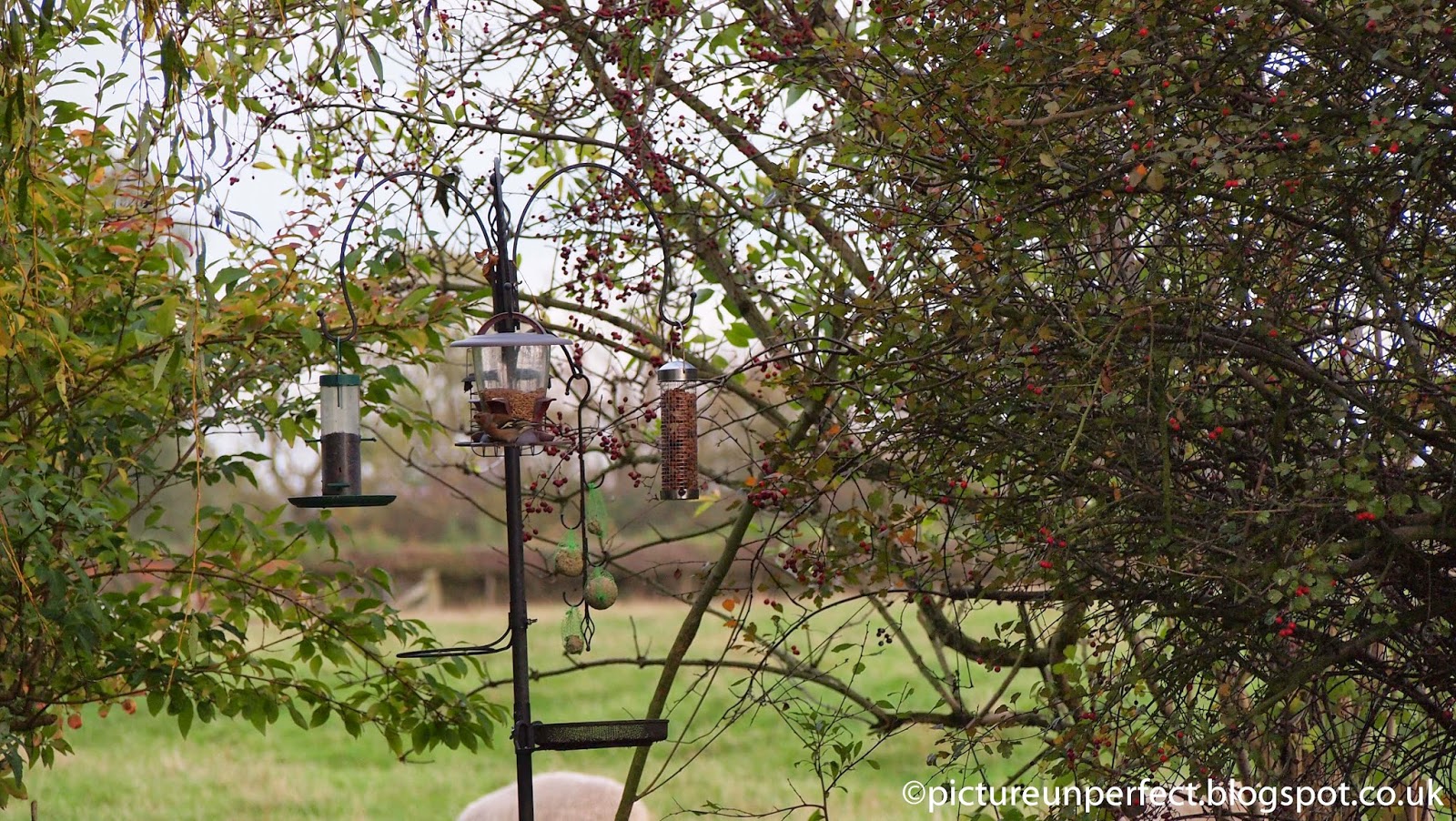It may be anthropomorphic but we really felt as Wally had developed his own personality, something that we didn't think was possible with a garden bird. By the end of 2012 we had weaned him off his bottle and onto solid food. He enjoyed the pigeon corn but he had taken a real liking to dried peas and was very discerning, throwing away a pea if it didn't meet his standards. He enjoyed looking out of the windows and watching the other birds. Wally seemed to be aware of the world outside.
 |
| Watching the other birds in the garden |
The other thing that we found surprising was Wally's love of being bathed. Now he was approaching full size, we had to bathe him in the kitchen sink. He did like to be pampered. Bathtime always made us laugh. See the video below for why:
 |
| Drying off on the kitchen door |
He was now at the point where he was outgrowing his bird cage. When he was out of it, Wally liked to perch on the kitchen door and watch what ever action was going on and fly down onto our heads if he thought he was missing anything. He didn't like going back into his cage on an evening and we knew that we had to find another way. The cage would soon be too small for him to stretch or flap his wings.
 |
| A shoulder to land on |
In our minds, we believed that when we released Wally back into the wild, he would stay close to the garden where he would be close to us and we could still feed and keep an eye on him. To that end, Terry`s brother kitted out and an archway between two parts of the garden into a secure area where Wally could fly around and roost safely. He also rigged the bird cage up to the outside of the gates and created an entrance, that would allow Wally to actually sit in the garden to get used to it without being in danger from predators.
 |
| Wally's "Conservatory" |
We made sure that Wall had plenty of water, a places to roost and plenty of food. We also included a heating disc that would warm his bed up during the winter evenings when the temperatures dropped.
 |
| Wally's outside enclosure |
Initially, Wally didn't seem keen to be in his new colder accommodation but he soon got used to it and we made sure that we saw him regularly and spend time with him. We were pleased to see him spending more time in his cage watching what was happening in the garden so it wouldn't be much of a surprise when we started to acclimatise him to the outside world.
We added a piece of turf that we sprinkled with food to try and mimic the circumstances for foraging for food in the wild. We used our trail-cam to review what he was up to during the day while we were working and were pleased to see him on the floor looking for food as he would do in the wild. We were becoming increasingly confident that he would be able to find his own food as he seemed to have the right instincts.
 |
| Trail-cam picture of Wally foraging |

|
| Perching on the Ladder |
One bright and surprisingly warm Saturday in early February 2013 we decided to try him the garden. Terry opened his cage and brought him out onto his arm. Wally rushed up to his shoulder but was otherwise calm and curious about being in the garden. It was all going well until we thought it would be a good idea for me to go back into the enclosure and try and call him through so he would know that he could get into his enclosure from the garden via the cage. We hoped that he would use the enclosure as his "home".
The moment I disappeared out of his sight, Wally flew off Terry`s arm. We watched in horror as he flew over the hedge and kept on going.
We were aghast. One of us remained in the garden in case he returned while the other went off around the village to try and find him but to no avail. Wally was gone. For weeks afterwards we would call out to any Woodpigeon that we saw in the hope that it was him. I would often walk around the village and nearby fields in the hope of being able to spot him (Wally had yet to develop the white flashes on his neck that mature Woodpigeons possess so we thought if we saw him we would know it was him).
A few weeks later we did see a Woodpigeon without the white markings underneath the bird feeders just outside the kitchen window. We hurried to the the door just in time to see it flee from when an adult male chased him away.
Do I think it was Wally? I like to think so for the following reasons - we had seen no other juvenile birds during the time we looked after Wally and he seemed to have been born outside the normal breeding window. I didn't think that there would be may birds like him in the area.
I chose to believe that it was Wally, and that he was making it fine without us. One thing is certain, if we had not taken Wally in that day in September then he would not have made it at all. I hope we gave him a fighting chance and ultimately that's all we could ever do.






































